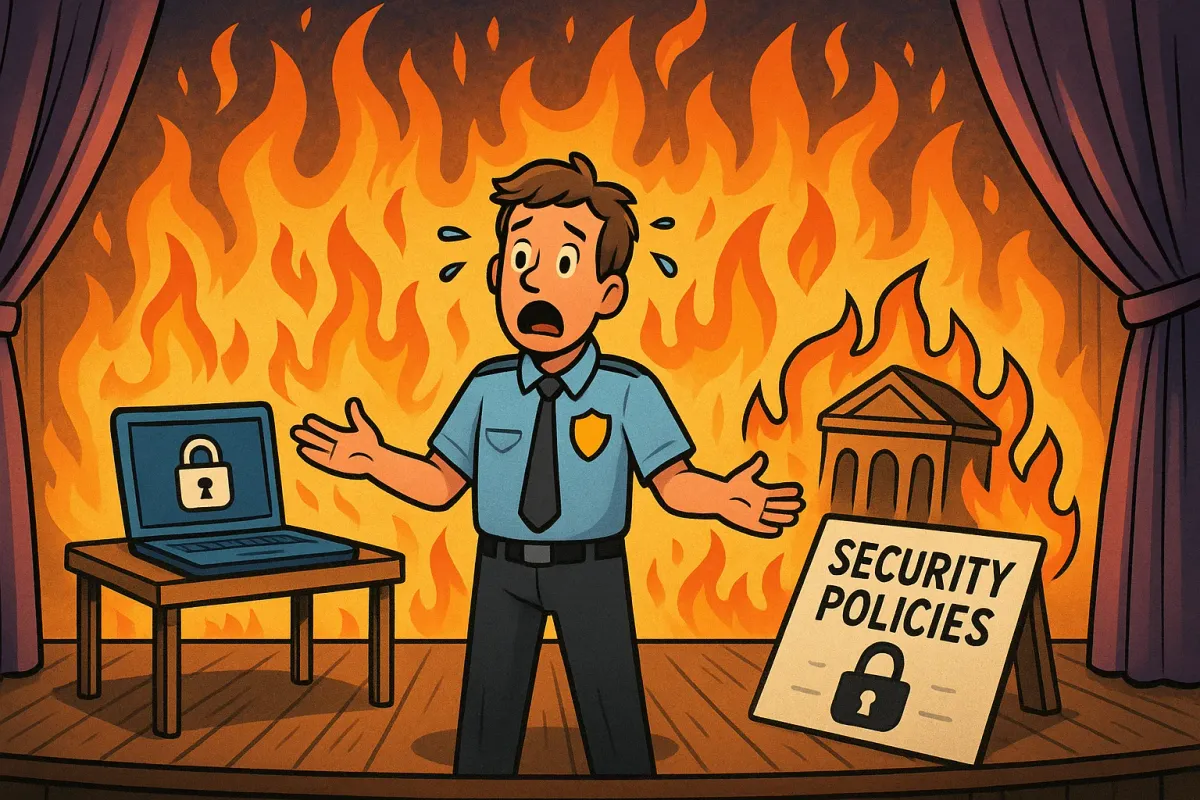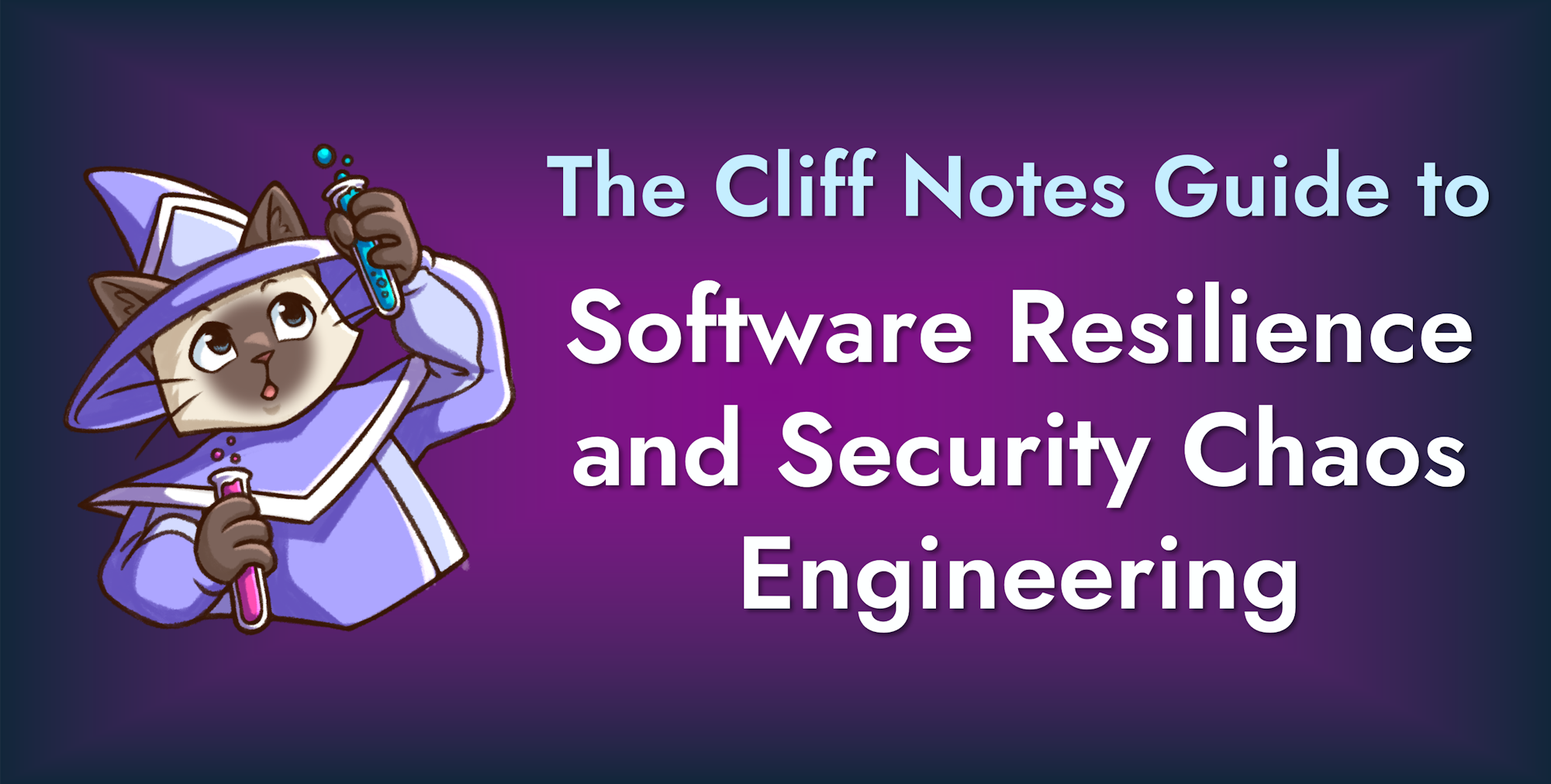The Cautionary Tale of InnovateNow: How We Staged a Security Play and Watched the Set Burn Down
InnovateNow faked security to win a big client—policies no one read, passwords no one remembered, and a shiny compliance cert. It worked, until a simple phishing email exposed it all. The breach wasn't dramatic, just inevitable. Real security isn't theater. It's culture, enforcement, and honesty.

Let me tell you a story about a startup called InnovateNow. It could be any startup, really. Maybe it’s a little like yours.
It was founded by Alex, who had a brilliant idea, boundless energy, and a knack for hiring smart, passionate people. For the first two years, things were a blur of caffeine, code, and customer wins. InnovateNow was the classic rocket ship. The product was finding its market, the team was growing, and investors were starting to circle with that hungry look in their eyes.
Then came the moment every founder dreams of and dreads in equal measure: a massive enterprise client, the kind of logo that changes everything, wanted to sign up. But first, they had a question.
“Can you walk us through your security program?”
Alex and the team froze. Their security program? It was… well, it wasn't really a program. It was a collection of good intentions, smart people using password managers, and a general sense of “we’ll get to it later.” In the race to build and grow, deep security work had become a form of technical debt.
The pressure was on. They needed to look the part, and fast. So, they did what many startups do. They didn't build a security program; they staged a security play.
Act I: The Performance Begins

The first act was all about props and costumes. The team downloaded a library of official-looking security policy templates. Data Classification, Acceptable Use, Incident Response—you name it, they had a policy for it. They dropped them into a shared drive, sent a company-wide email, and voilà! Instant security posture. The problem? No one actually read them, and nothing was technically enforced. The policies were just for show.
Next came the most visible part of the performance: the password policy. It was a masterpiece of inconvenience, demanding frequent changes and a baroque combination of letters, numbers, and symbols that no human could remember. It made everyone feel like security was being taken seriously, but in reality, it just led to passwords on sticky notes and predictable patterns. It was a perfect example of what security expert Bruce Schneier calls "security theater"—measures that provide the feeling of security while doing little to achieve it.
The grand finale was getting a compliance certificate. It was a whirlwind of checklists and generating evidence for auditors. The goal wasn't to be secure, but to prove they were secure on paper. When they passed, they celebrated. They had the certificate. They had the policies. They had the annoying password prompts.
They had put on a great show. The enterprise client was impressed. The deal was signed. Everyone, from the investors to the newest hire, breathed a sigh of relief. They felt safe.
Act II: The Cracks Appear

But backstage, the set was starting to wobble. The performance of security was creating real friction.
The engineering team, once a high-speed engine of innovation, was getting bogged down. They were constantly pulled off feature work to fix "critical" vulnerabilities flagged by an automated scanner—issues that, in the context of their architecture, posed almost no real risk. It was a frustrating waste of time, and a dangerous"boy who cried wolf" culture began to set in. The developers started to ignore the security alerts altogether.
With morale sinking, people began to take shortcuts.
Worse, the restrictive IT rules meant that to get their jobs done, employees started finding workarounds. They used personal cloud drives and unsanctioned SaaS apps to collaborate and move faster. This "shadow IT" created huge, unmonitored backdoors into the company, completely invisible to the security team..
The company felt secure, but it had never been more vulnerable. The focus on appearance had created a false sense of safety, causing everyone to lower their guard.
Act III: The Curtain Falls

The breach, when it came, wasn't a sophisticated, movie-plot attack. It was mundane. An employee, tired and rushing through their inbox, clicked on a clever phishing email.
The attackers got a single password.
From there, they moved through the network. The theatrical controls were useless. The unenforced policies, the complex passwords written on a notepad, the compliance certificate hanging on a virtual wall—none of it mattered. The attackers found the "shadow IT" backdoors and walked right in.
The aftermath was chaos. Customer data was stolen. The product went offline. The big enterprise client invoked the security clause in their contract. The investors who had been so impressed by the security "program" were now asking very different, much harder questions.
The cost wasn't just financial, though that was staggering enough for a small company. The real cost was the complete erosion of trust. The trust of their customers, their investors, and their own employees. InnovateNow’s rocket ship had crashed.
The Moral of the Story
We tell the story of InnovateNow because it’s a trap any startup can fall into. The pressure to grow and appear credible is immense, and security theater is a tempting shortcut. It offers a comforting illusion of safety and control.
But true security isn't a performance. It’s the opposite. It’s a culture of accepting that you are constantly vulnerable and that failure is inevitable. It’s the slow, often invisible work of building resilience. It’s about having honest, uncomfortable conversations about risk and prioritizing the hard engineering work that actually reduces it.
Instead of staging a play, build a culture of genuine security. Security isn’t a costume. It’s the script, the rehearsal, and the fireproof set. Don't just write policies; automate their enforcement. Instead of focusing on password complexity, implement strong, phishing-resistant multi-factor authentication. Instead of chasing compliance checkboxes, use to build security into the DNA of your development process from day one.
When you do this, security stops being a blocker and becomes what it should be: a business enabler. It’s the solid foundation that gives you the confidence to innovate, experiment, and grow—not just quickly, but safely. Don't let your startup's story become a cautionary tale. Build a real security culture, and you'll be ready for the spotlight when it finds you.











